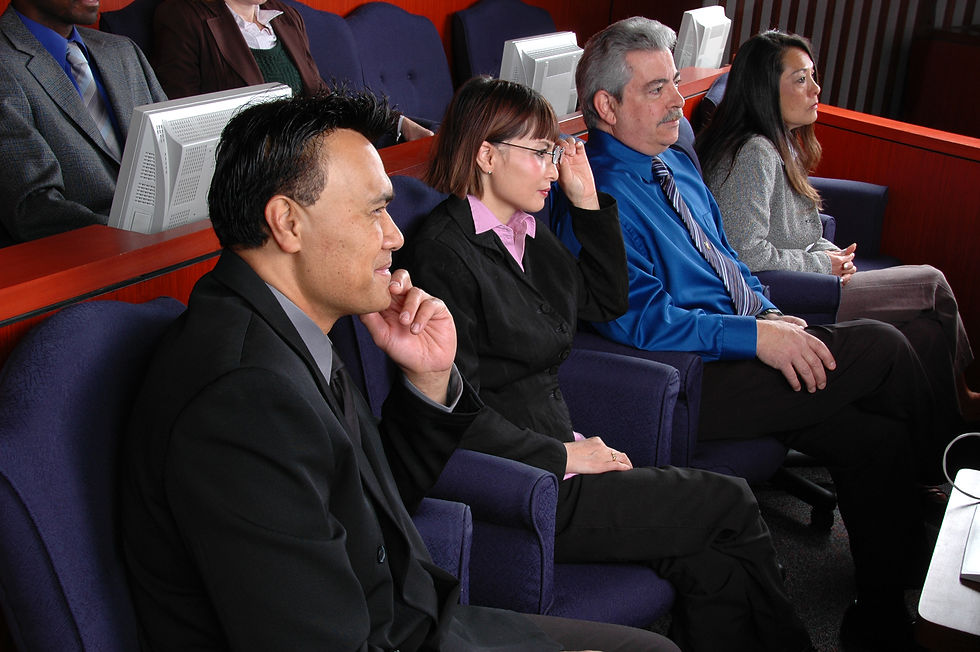Juror Memory: The Power of Multimedia Trial Presentations
- intotheunknown0
- May 7, 2024
- 2 min read
In the realm of legal proceedings, the ability to effectively convey evidence to jurors can make all the difference between success and failure. Traditional methods of presenting evidence, relying solely on verbal arguments and static exhibits, often fall short in capturing the attention and understanding of jurors. However, the integration of multimedia elements into trial presentations has emerged as a game-changer, significantly impacting jurors' memory retention and comprehension of crucial evidence.
Engaging the Senses:
Human memory is inherently tied to sensory experiences, and multimedia presentations have the unique ability to engage multiple senses simultaneously. By incorporating visual aids such as videos, animations, and graphics, trial presentations create a dynamic and immersive experience for jurors. These visual stimuli not only capture their attention but also facilitate better comprehension and retention of complex information.
Enhanced Understanding:
One of the most significant advantages of multimedia trial presentations is their ability to simplify complex concepts and evidence. Through visual representations and demonstrations, jurors can grasp intricate details more easily, leading to a deeper understanding of the case. Whether it's recreating crime scenes, illustrating medical procedures, or animating timelines, multimedia elements provide clarity and context that traditional methods often lack.
Emotional Impact:
Beyond mere comprehension, multimedia presentations have a profound emotional impact on jurors. Videos and audio recordings can evoke empathy, evoke emotional responses, and humanize the individuals involved in the case. By connecting on an emotional level, multimedia presentations create a more compelling narrative that resonates with jurors long after they leave the courtroom.
Retention and Recall:
Studies have shown that multimedia presentations significantly improve jurors' memory retention compared to traditional methods. The combination of visual and auditory stimuli creates stronger memory traces, leading to better recall of critical evidence during deliberations. Jurors are more likely to remember key details and testimony presented through multimedia, ultimately influencing their decision-making process.
The Future of Trial Advocacy:
As technology continues to evolve, the role of multimedia in courtroom presentations will only grow in importance. Legal professionals must embrace these advancements and harness the power of multimedia to effectively advocate for their clients. By leveraging technology to create engaging and informative trial presentations, attorneys can increase their chances of success in the courtroom while ensuring that justice is served.
In conclusion, multimedia trial presentations represent a paradigm shift in legal advocacy, offering unparalleled opportunities to engage jurors, enhance comprehension, and improve memory retention of critical evidence. By embracing these innovative tools, legal professionals can create more persuasive and impactful presentations that leave a lasting impression on jurors, ultimately shaping the outcome of trials.



Comments